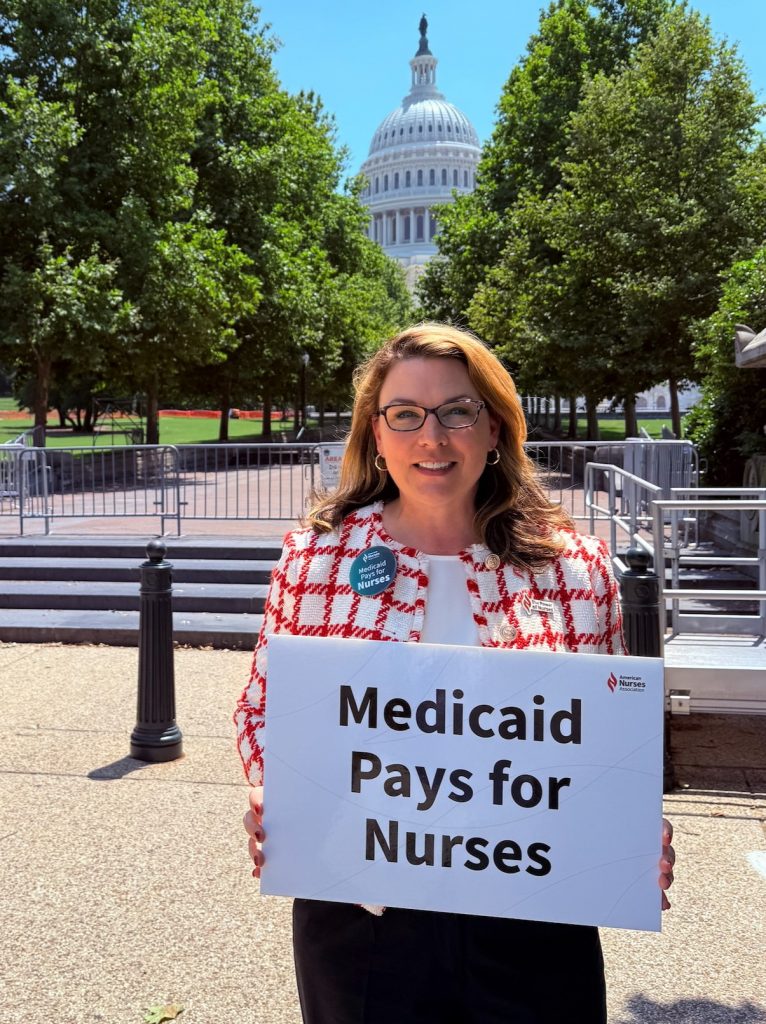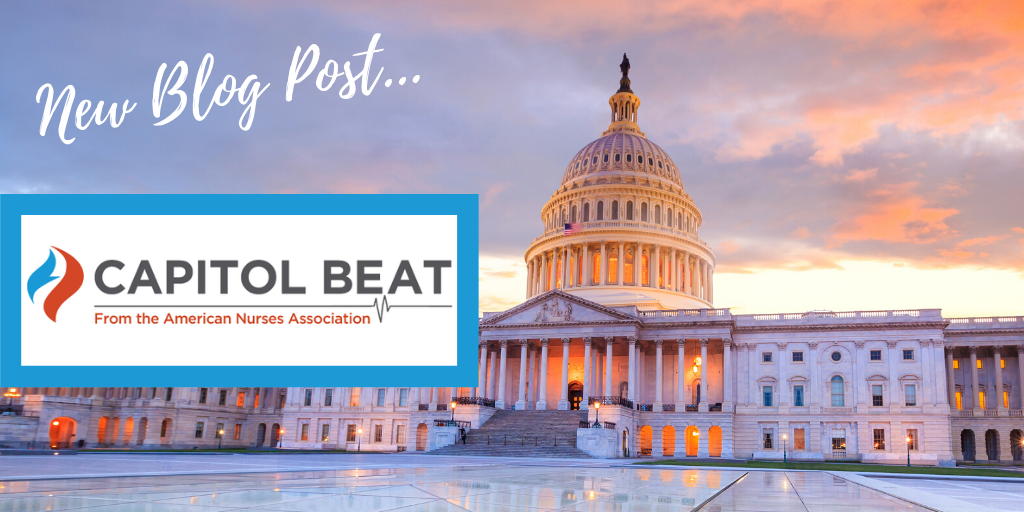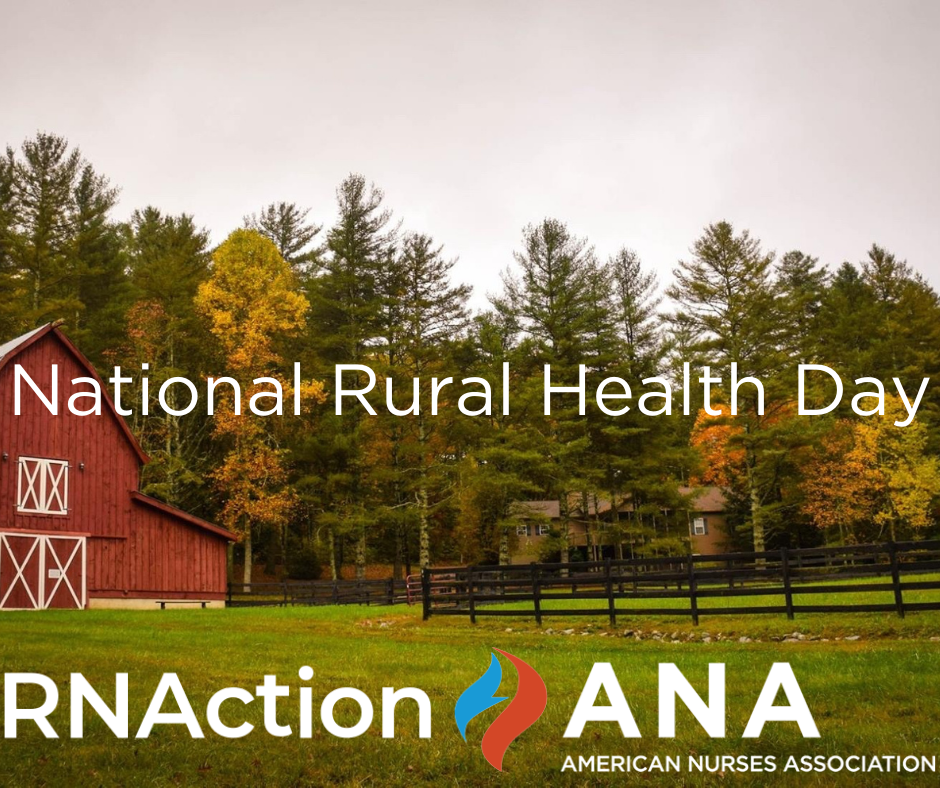As Americans were celebrating our nation’s birthday with BBQ and fireworks, President Donald Trump signed the One Big Beautiful Bill (OBBBA; H.R. 1) into law. This new law:
- permanently extended the 2017 tax cuts,
- adopted additional tax reforms, and
- provided funding for other Trump Administration priorities.
One tax reform includes tax deductions on overtime pay for nurses, first responders, and others. To partially offset the law’s $3.3 trillion price tag, OBBBA includes almost $1 trillion in cuts to Medicaid spending and will make health insurance coverage inaccessible to 10 million individuals by 2034, according to estimates from the Congressional Budget Office.
Here is an overview of Medicaid and other health reforms that will impact the nursing workforce and the patients whom they serve.
Medicaid Finance Reforms
OBBBA makes several reforms that lower federal and state government spending on Medicaid and have a trickledown effect on healthcare facilities and the nursing workforce in these settings. For example, one provision restricts states’ use of provider taxes to finance their share of Medicaid spending with exceptions for nursing homes and intermediate care facilities. Another section in the bill related to state-directed payments changes how much states can direct Medicaid managed care plans to pay providers. Finally, OBBBA eliminates the temporary 5% increase to the traditional federal medical assistance percentage (FMAP) that the federal government provided to new expansion states under the American Rescue Plan.
Finally, OBBBA eliminates the temporary 5% increase to the traditional federal medical assistance percentage (FMAP) that the federal government provided to new expansion states under the American Rescue Plan.
Restrictions on Medicaid financing will force states to limit eligibility, coverage, and payments to meet statutory budget constraints.

Consequently, healthcare facilities that are heavily reliant on Medicaid funding will be forced to either cut critical services or close their doors altogether. This could:
- jeopardize nursing jobs,
- aggravate nursing workforce challenges, and
- reduce reimbursement for advance practice registered nurses (APRNs).
Patients will ultimately see less access to care, particularly in rural and medically underserved communities.
Changes to Medicaid Eligibility and Access Policies
H.R. 1 also makes several policy changes that restrict Medicaid eligibility and access. Starting in 2027, the law requires adults between the ages of 19 and 64 to work or participate in a qualifying activity for at least 80 hours a month. Thanks to ANA’s advocacy, the law provides an exemption for adults who are enrolled in nursing school or other academic settings.
OBBBA will require states to conduct eligibility checks every six months beginning next year and restrict their ability to provide retroactive coverage starting in 2027. The law also delays implementation of the Eligibility and Enrollment Rule, a pair of Biden-era rules that aim to reduce barriers to enrollment in Medicaid and other programs, until 2035. One bright spot for patients in the law is its expansion of home and community-based services to individuals who do not need an institutional level of care beginning in July 2028.
Most of these policy changes will make it difficult for Medicaid beneficiaries to retain coverage and disincentivize other patients from enrolling in the program. Patients who no longer have access to Medicaid coverage will delay care and experience worse patient outcomes when they finally do receive care. Healthcare providers will also experience an increase in uncompensated care. While it is heartening to see H.R. 1 expand home and community-based services to patients who do not need an institutional level of care, the jury is out on whether these patients will have adequate access to nurses and other healthcare personnel.
Rural Health Transformation Program
H.R. 1 is projected to result in a $155 billion reduction in Medicaid spending in rural communities over the next decade, resulting in hospital closures and reduced access to care for rural patients. To blunt the impact on Rural America, the law establishes a Rural Health Transformation Program that will support efforts to address challenges facing rural health systems. Initiatives that aim to strengthen the rural health workforce, improve access to rural providers, and/or promote technology-driven solutions like robotics and artificial intelligence are perfect candidates for support from this program. OBBBA authorizes $50 billion in funding to the program with $25 billion equitably distributed among the states and $25 billion given out at the discretion of the CMS Administrator. More information from CMS is expected in September.
While well-intentioned, the reality is that this program does not fully offset the cuts that rural facilities will face because of the law. Additionally, the language in the section creating this program is written in a manner that makes non-rural facilities eligible for funding.
Delayed Implementation of Nursing Home Staffing Rule
Last year, the Centers for Medicare and Medicaid Services (CMS) finalized the Minimum Staffing Standards for Long-Term Care Facilities and Medicaid Institutional Payment Transparency Reporting Final Rule (CMS 3442-F). This rule:
- sets minimum staffing standards,
- requires a registered nurse (RN) to be onsite 24 hours a day, 7 days a week in long-term care facilities that participate in the Medicare and Medicaid programs, and
- requires facilities to engage nurses in identifying staffing needs through facility assessments.
To help defray the cost of OBBBA, the law delays HHS from implementing the final rule through September 30, 2034. However, the facility assessment and Medicaid transparency provisions in the rule were excluded from the final text because they were subject to the Byrd Rule in the Senate. The Byrd Rule requires that provisions included in budget reconciliation measures focus on fiscal matters. This delay in implementation of the staffing rule only exacerbates staffing challenges in long-term care facilities that lead to nurse burnout and attrition from the profession. This moratorium also delays patient care and results in worse patient outcomes for nursing home residents.
Temporary Payment Increase for Healthcare Providers
Since Calendar Year (CY) 2000, the reimbursement rate that healthcare providers receive has been declining due to statutory budget neutrality requirements. This gradual reduction is especially challenging for APRNs who receive 15% lower reimbursement than physicians in Medicare for doing the same work. In CY 2025, CMS finalized a 2.8% cut to the conversion factor after a temporary increase in payments for CY 2024 expired.
H.R. 1 temporarily increases the conversion rate by 2.5% for 2026. While this increase does not resolve reimbursement challenges facing APRNs, it is a step in the right direction to ensuring that patients have access to APRN care.
Future Opportunities to Shape Medicaid Policy
The fight to save Medicaid is far from over. Through the Partnership for Medicaid, ANA recently endorsed a pair of bills to roll back provisions in H.R. 1:
- Senator Josh Hawley’s (R-MO) Protect Medicaid and Rural Hospitals Act (S.2279) would repeal the law’s restrictions on provider taxes and state directed payments. It would also double the duration and funding for the Rural Health Transformation Program.
- Senate Minority Leader Chuck Schumer (D-NY) and Senate Finance Committee Chair Ron Wyden (D-OR) introduced the Protecting Health Care and Lowering Costs Act (S.2556) to repeal the entire health section of H.R. 1. The measure also permanently extends the ACA premium tax credits that are set to expire at the end of this year and result in an additional 5 million individuals losing healthcare coverage.
ANA will also have ample opportunity to weigh in on implementation of H.R. 1 by the federal government and the states. It is also quite possible that the Administration issues regulations that adopt Medicaid reforms that did not make it into OBBBA. Similarly, House Speaker Mike Johnson and other Republican lawmakers have mentioned the possibility of additional budget reconciliation measures. While it’s not clear what these bills would cover, it’s quite possible that they may address policies that didn’t make it into H.R. 1. ANA and its allies in the nursing and broader healthcare community stand ready to play defense yet again if the need arises.
Check out our report on H.R. 1 for more information about what is in the bill that is relevant to nurses. Let us know how the reforms will impact your practice and patients, share your story today.


